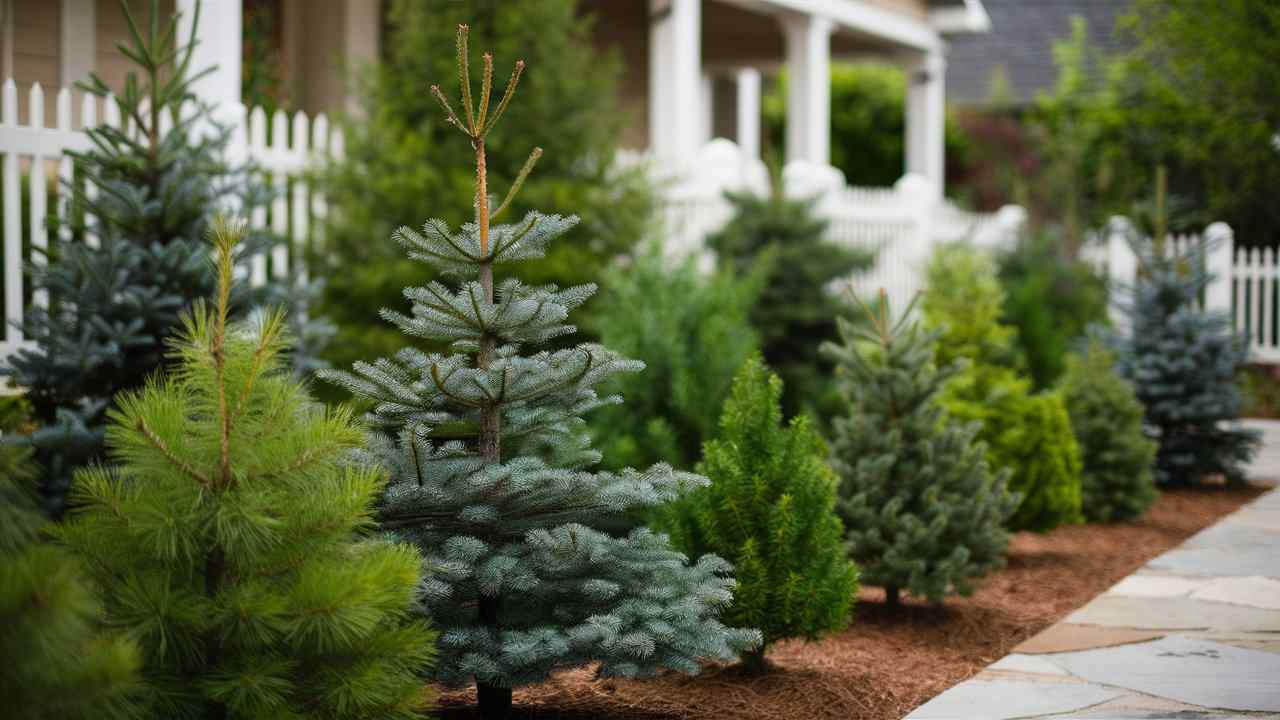When incorporating pine trees into your front yard, dwarf and compact varieties are excellent options for those seeking a low-maintenance, visually appealing landscape. These trees provide unique aesthetics and functionality without overwhelming the space.
Bonsai Pine (Pinus thunbergii)
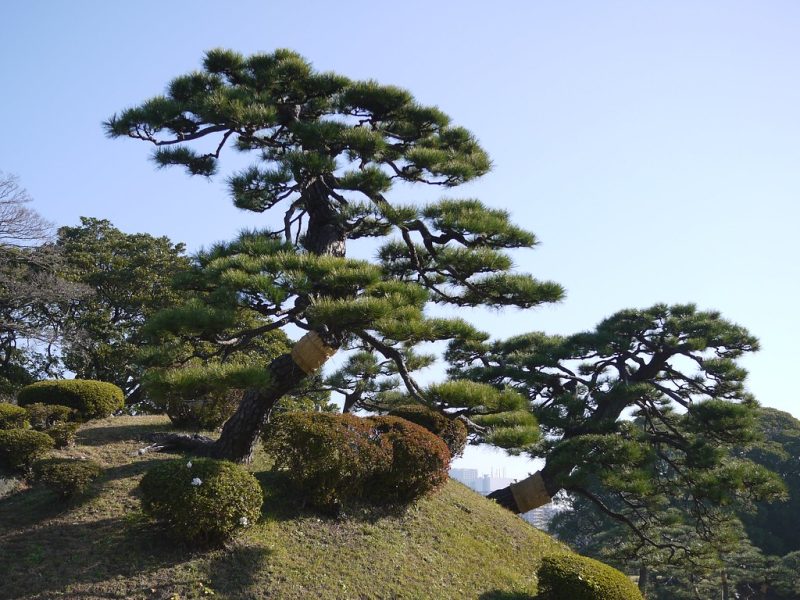
The Bonsai Pine, specifically the Black Pine (Pinus thunbergii), is often celebrated not just for its stunning appearance but also for its intricate growth patterns that can be trained over time. This traditional Japanese tree thrives well in a variety of soil types as long as drainage is adequate. The distinctive, long needles set against rugged bark create a dramatic contrast, enhancing the character of a front yard. When cultivated as bonsai, care is essential—trimming, wiring, and proper watering are crucial to growth. For homeowners looking to make a statement, a Bonsai Pine can serve as a living sculpture, drawing admiration from neighbors and guests alike while being a conversation starter.
Dwarf Mugo Pine (Pinus mugo ‘Compacta’)
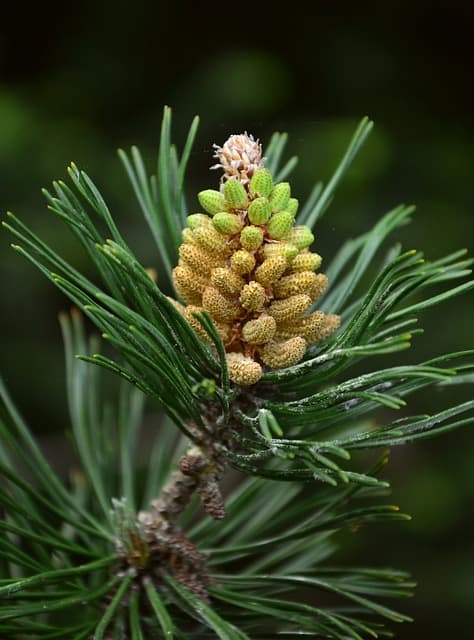
The Dwarf Mugo Pine (Pinus mugo ‘Compacta’) stands out as one of the most popular choices for front yard landscaping. Characterized by its bushy, rounded shape and dark green, cushion-like foliage, this pine variant is exceptionally hardy and drought-tolerant. Its compact growth habit generally limits it to heights of 2 to 3 feet, making it an ideal choice for borders, rock gardens, or as low-maintenance accents around stepping stones and pathways. The Mugo Pine is particularly resilient against pests and diseases, ensuring that your front yard remains looking pristine with minimal intervention. With its ability to adapt to varying soil conditions, this bushy gem can provide year-round visual interest, displaying unique textures through all four seasons.
Scots Pine (Pinus sylvestris ‘Nana’)
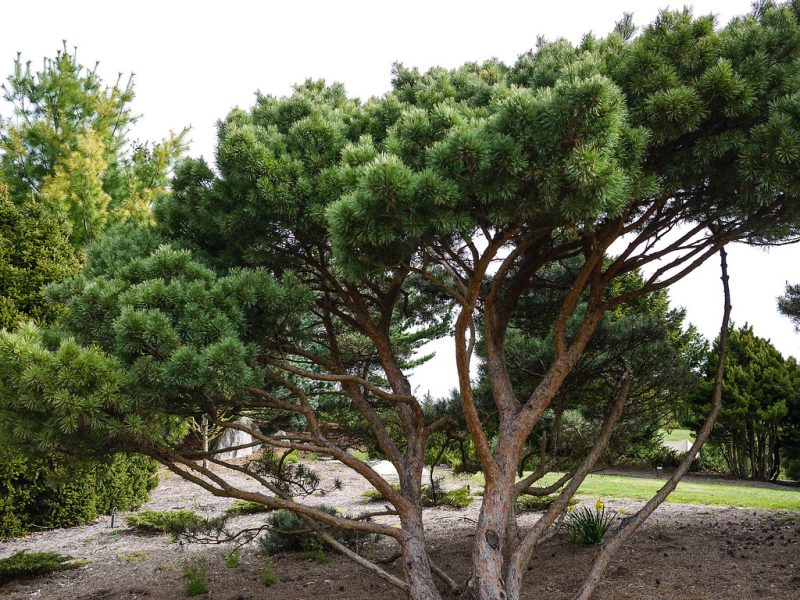
For those desiring a truly unique feature, the Scots Pine (Pinus sylvestris ‘Nana’), also known as the Dwarf Scots Pine, offers a stunning option. This small, dense tree showcases a robust structure, highlighted by its twisted branches and short, coupled needles. The ‘Nana’ cultivar is particularly striking because of its globe-shaped growth, which typically remains under 3 feet tall, making it excellent for low planting areas and smaller front yards. Scots Pine is renowned for its adaptability to various soil types and climates, thriving in both well-drained and slightly acidic conditions. Its fascinating bark character—red-orange in color and exfoliating—adds additional texture and warmth to garden beds. Through the seasons, this pine will keep your front yard visually interesting, particularly during the fall when its needles take on a golden hue before shedding.
Small to Medium Pines
When considering pine trees for your front yard, small to medium varieties bridge the gap between impressive stature and manageable size. These pines can act as focal points, provide structural variety, and even serve specific ecological roles within your landscape. Their adaptability to different environments means that they can flourish in many regions while also requiring relatively low maintenance.
Austrian Pine (Pinus nigra)

The Austrian Pine (Pinus nigra) is a striking option for those looking for a robust yet relatively compact tree. Renowned for its dense, dark green needles and strong, upright growth, this tree can reach heights of 30 to 60 feet, making it an attractive statement piece for front yards that have a bit more room to spare. This pine exhibits a pyramidal shape that can quickly develop into a sweeping, open canopy as it matures, proving to be an excellent choice for offering shade and shelter. A significant advantage of the Austrian Pine is its resilience to harsh conditions, including drought, pollution, and even snow loads. Its adaptability makes it a favorite among urban gardeners seeking to enhance the aesthetic of their properties while ensuring longevity. Furthermore, its cones, which can remain on the tree for several years, provide visual interest through different seasons and attract various bird species.
Eastern White Pine (Pinus strobus)
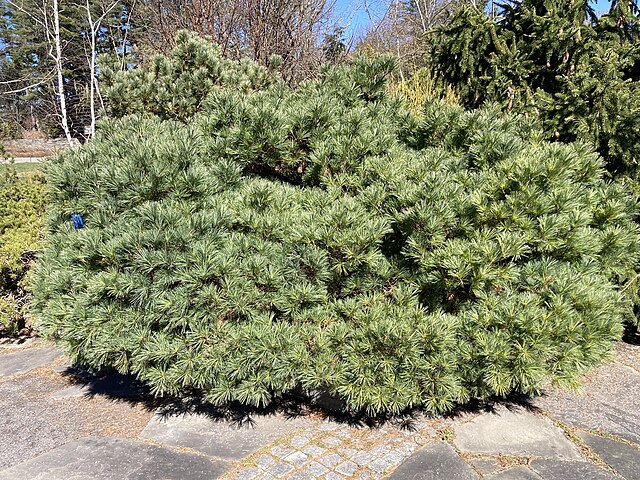
The Eastern White Pine (Pinus strobus) is noted for its graceful appearance and versatile uses in landscaping. With its soft, long needles that can reach up to five inches in length, this medium-sized tree can grow between 50 to 80 feet tall, offering a beautiful display of form and texture. Eastern White Pines thrive in rich, well-drained soils but are also adaptable to poorer conditions. For front yard design, they provide a stunning vertical element that draws the eye upward. This tree is particularly valued not only for its aesthetic appeal but also for its ecological benefits; it serves as a habitat for various wildlife and plays a role in promoting biodiversity. The Eastern White Pine is a symbol of longevity and resilience, known for its fast growth and straight trunks, making it an attractive choice for creating a formal visual impression or a natural woodland feel.
Japanese White Pine (Pinus parviflora)
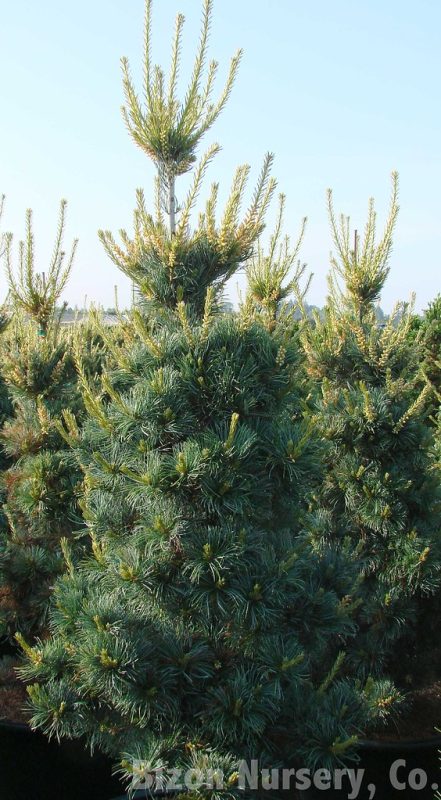
For those who appreciate unique aesthetics, the Japanese White Pine (Pinus parviflora) presents itself as a noteworthy candidate for front yard enhancement. Often recognized for its beautiful blue-green needles that exhibit a pleasant aroma, this medium-sized tree can reach heights of 20 to 30 feet. Its irregular, picturesque shape provides an artistic touch that can harmonize well with other elements in the landscape, especially when combined with rocks and water features. Originating from the mountains of Japan, this pine is known for its tolerance to adverse conditions, including drought and poor soil, which makes it an ideal choice for gardeners who may face varied climates. As an added bonus, the Japanese White Pine can develop interesting bark patterns as it ages, enhancing its visual appeal over the years. Its growth is slower than some of its relatives, allowing it to be an enduring presence in your garden.
Ponderosa Pine (Pinus ponderosa)
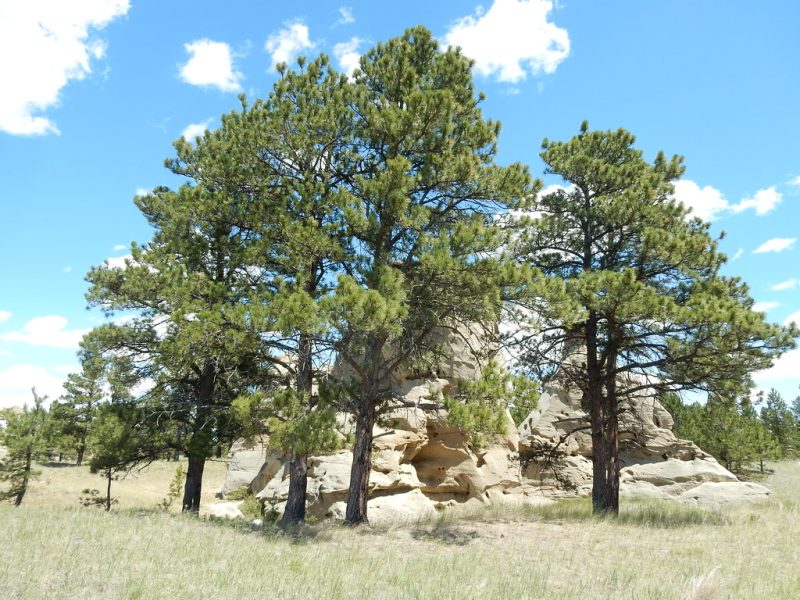
The Ponderosa Pine (Pinus ponderosa) offers an impressive stature combined with a distinctive presence for front yards. Preferring sunnier spots with ample space, this tree can reach heights of 60 to 200 feet, showcasing its beautiful, long needles and reddish-brown bark that develops deep fissures over time. Although it is typically suited for larger landscapes, its striking form and variable growth habits allow it to fit gracefully even in larger front yards. A charming aspect of the Ponderosa Pine is its delightful vanilla scent, which becomes noticeable when the warm sun hits its bark. This feature, along with its ability to attract various birds and other wildlife, can contribute to a lively front yard environment. The Ponderosa Pine is highly adaptable, thriving in various soil types and exhibiting good drought resistance once established. Its graceful, tall silhouette can serve as both a backdrop and a focal point, creating a majestic feel that elevates the overall aesthetic of your front yard.
Ornamental Pines
Incorporating ornamental pines into your front yard offers a splendid way to enhance its beauty while showcasing unique textures, colors, and forms. These trees not only serve decorative purposes but can also provide habitat for local wildlife, create peaceful environments, and even reduce noise pollution. In this section, we will explore four exceptional ornamental pine varieties that make stunning additions to any front yard setting.
Blue Atlas Pine (Cedrus atlantica ‘Glauca’)

If you’re looking to make a dramatic statement in your front yard, consider the Blue Atlas Pine (Cedrus atlantica ‘Glauca’). This striking conifer is renowned for its silvery-blue needles that create a stunning contrast against the greenery of a typical residential landscape. Typically maturing to heights of 30 to 50 feet, the Blue Atlas Pine boasts an elegant, pyramidal shape that adds vertical interest. Its graceful branches can create a majestic silhouette, especially when illuminated by the soft rays of the morning or setting sun. This species prefers well-drained, alkaline soils but adapts well to various environmental conditions. While its aesthetic appeal is undeniable, the Blue Atlas Pine also offers additional benefits, such as attracting birds and other wildlife drawn to its coverage. Keeping this tree well-watered during its establishment phase will pay off in years of grandeur, making it a long-lasting centerpiece for any discerning garden enthusiast.
Eastern Red Cedar (Juniperus virginiana)

While technically a juniper, the Eastern Red Cedar (Juniperus virginiana) is a versatile and attractive addition to the landscape that often gets included in discussions about ornamental pines due to its tree-like structure and evergreen nature. This medium-sized tree can grow anywhere from 30 to 60 feet tall and is notable for its graceful, feathery foliage that ranges from green to a striking blue-green hue. It exhibits a conical shape and provides a lush, dense coverage that makes it useful for privacy screens and windbreaks. Furthermore, the Eastern Red Cedar is highly adaptable, thriving in a variety of soil types and attracting birds and pollinators with its fragrant, berry-like cones. Its aromatic wood is also resistant to decay, making it a popular choice for various woodworking projects. In the front yard, the Eastern Red Cedar brings beautiful color year-round while providing ecological benefits, such as serving as a habitat for local wildlife.
Lodgepole Pine (Pinus contorta)
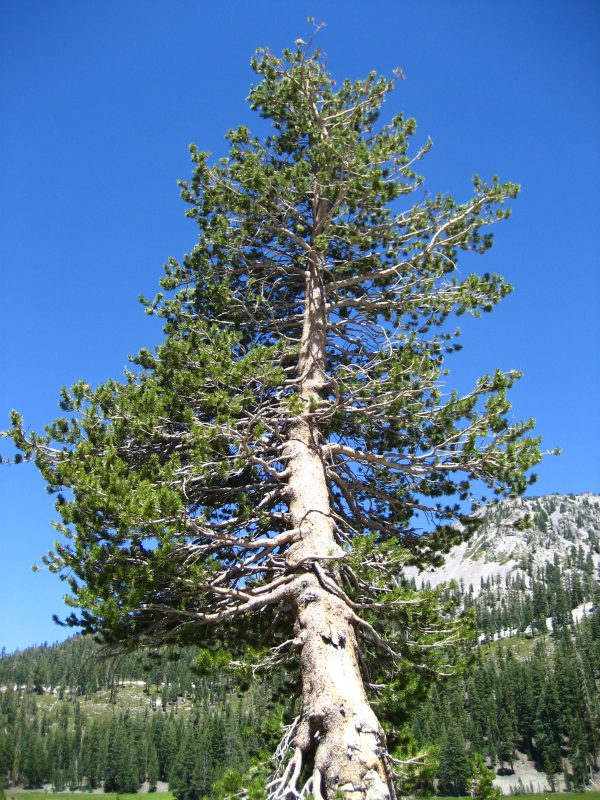
The Lodgepole Pine (Pinus contorta) stands out as another exceptional ornamental choice for front yard landscapes, particularly in areas that may experience wind or colder temperatures. This medium-sized tree typically grows between 20 to 80 feet, depending on the locale, and is characterized by its tall, straight trunk and slender form. The Lodgepole Pine’s needles are typically long and grouped in clusters, lending a graceful appearance to its profile. This hardy species is well-suited for a range of climates, making it resilient in various soil conditions, though it prefers sandy or loamy soils with good drainage. Lodgepole Pines are known for their adaptability and quick growth, which allows them to provide ample shade in a relatively short period. Given their ability to thrive in poor and rocky soils, these pines can be effectively utilized in hillside landscaping or as part of naturalistic plantings. The Lodgepole Pine’s impressive height and unique shape can create striking focal points, adding vertical interest that enhances the overall aesthetic of your front yard.
Colorado Blue Spruce Pine (Picea pungens)
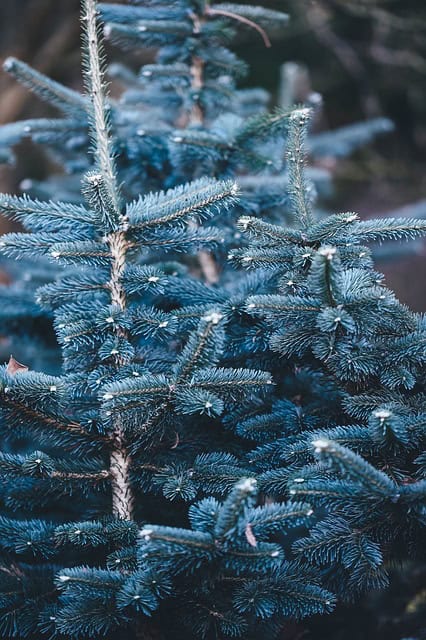
One of the most visually stunning choices for a front yard is the Colorado Blue Spruce Pine (Picea pungens). Characterized by its striking silvery-blue needles, this tree adds a splash of vibrant color to any landscape. Typically growing to heights of 30 to 60 feet, the Colorado Blue Spruce features a conical shape that makes it an ideal focal point. Its dense foliage offers excellent shade and privacy, providing a natural screen for your home. This spruce thrives in well-drained soils and prefers full sun, making it suitable for various climates. Additionally, its adaptability to both cold and warmer environments allows it to flourish in a range of settings. Beyond its aesthetic value, the Colorado Blue Spruce attracts birds and other critters, offering safe havens for nesting and feeding. Ensuring adequate water during its establishment will help this beautiful specimen thrive in your yard for generations.
Norway Spruce Pine (Picea abies)
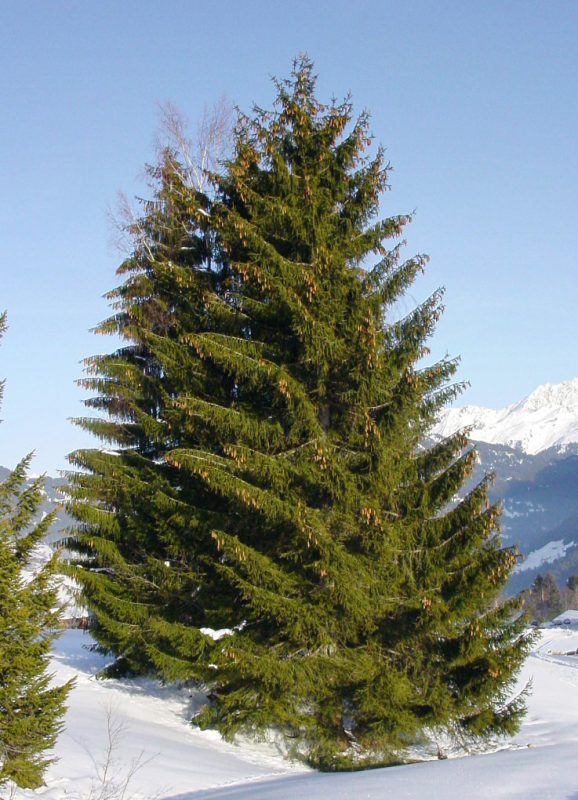
The Norway Spruce Pine (Picea abies) adds a classic touch to any front yard landscape, known for its symmetrical conical form and lush green foliage. This evergreen variety can grow between 40 to 60 feet tall and is particularly valued for its dense and drooping branches, creating a soft, cascading effect. The Norway Spruce thrives in well-drained soils but is adaptable to various conditions, including clay and sandy soils, making it an excellent choice for diverse gardening scenarios. One of its standout features is its ability to tolerate extreme cold, making it suitable for regions with harsh winters. When planted as a specimen tree or within a grouping, the Norway Spruce can create a stunning backdrop for landscaping elements such as flower beds or patios. Additionally, it serves as a significant habitat for birds and other wildlife, offering shelter and food sources in its boughs. This hardy evergreen can enhance the charm of your front yard while promoting biodiversity.
Native US Pine Species (by Region)
Choosing native pine species for your front yard not only enhances the local ecology but also ensures that your landscaping is well-adapted to the regional climate and soil conditions. By selecting trees that naturally thrive in your area, you can promote biodiversity while reducing the need for excessive maintenance. This section outlines key native pine species from various regions across the United States, illustrating their unique attributes and benefits.
Northeast: Eastern White Pine, Red Pine
In the Northeast, the Eastern White Pine (Pinus strobus) stands out as a versatile and aesthetically pleasing option for landscape design. This majestic tree can reach heights of 50 to 80 feet and is characterized by its soft, long needles and straight trunk. It is particularly valued for providing shade and habitat for local wildlife, making it a fantastic choice for creating a sustainable environment in your front yard. Its adaptability to various soil types, along with its relatively quick growth rate, allows it to establish quickly, filling in space and enhancing the overall beauty of your yard.
Alongside the Eastern White Pine, the Red Pine (Pinus resinosa) also deserves recognition in the Northeast. This tree typically stands between 50 to 75 feet tall and boasts a more uniform, conical shape compared to its softer counterpart. Its distinctive reddish-brown bark and stiff, long needles add a unique texture to the landscape. The Red Pine is particularly adaptable to sandy and well-drained soils, making it a resilient choice for various property settings. Additionally, this species is known for its ecological benefits, providing nesting sites for birds and attracting pollinators.
South: Loblolly Pine, Shortleaf Pine
In the southern parts of the United States, the Loblolly Pine (Pinus taeda) is a staple species that excels in many landscaping scenarios. Known for its rapid growth and ability to thrive in a variety of soil types, this tree typically reaches heights of 60 to 100 feet. With its tall, straight trunk and dense canopy, the Loblolly Pine can offer excellent shade and shelter for wildlife. It also produces edible pine cones that can attract squirrels and birds. This adaptable pine can tolerate wet and poorly drained soils, making it a great selection for low-lying areas while still being able to perform well in drier spots.
Another noteworthy option in this region is the Shortleaf Pine (Pinus echinata). Reaching heights of 40 to 80 feet, it is slightly smaller than the Loblolly but equally valuable for its versatile habitat. The Shortleaf Pine thrives in well-drained soils but can also adapt to clay and rocky conditions. It is particularly appreciated for its open and irregular growth habit, which can create a beautiful visual interest in your front yard. The tree’s short, flexible needles and unique bark pattern provide character, while its status as a valuable wildlife habitat contributes further to its appeal.
West: Ponderosa Pine, Jeffrey Pine
In the western regions of the United States, the Ponderosa Pine (Pinus ponderosa) stands out as a favorite for homeowners looking to add grandeur to their front yards. Known for its impressive heights, typically reaching 60 to 200 feet, this tree features long, soft needles and beautiful golden, flaking bark that adds visual appeal. The Ponderosa Pine thrives in well-drained soils and prefers full sun, making it perfect for open spaces. Its ecological value is significant, providing habitat for numerous bird species and acting as a resource for pollinators. Additionally, its captivating scent, which has been described as vanilla-like, creates an inviting atmosphere around your landscape.
The Jeffrey Pine (Pinus jeffreyi), closely related to the Ponderosa, is another excellent choice for western front yards. This tree can reach heights of 40 to 80 feet and is recognizable by its thick bark, which appears deep furrowed. The Jeffrey Pine typically grows in mountainous areas and is adapted to tolerate drought. Its needles are slightly longer than those of the Ponderosa Pine, providing a lush appearance. The tree is also known to emit a sweet aroma resembling piñon, adding to the sensory experience of your yard. Both the Ponderosa and Jeffrey Pines contribute to the local ecology by attracting wildlife and providing natural habitat.
Northwest: Western White Pine, Eastern White Pine
In the Northwest, the Western White Pine (Pinus monticola) is a stunning choice for front yards. This elegant tree can reach heights of 50 to 100 feet and features soft, flexible needles that create a lovely appearance. Its graceful, pyramidal shape and attractive gray-green bark make it a favored ornamental choice. The Western White Pine thrives in a variety of soils, particularly in well-drained, sandy types, and prefers sunny locations. Its adaptability allows it to grow in diverse landscapes, supporting a variety of wildlife that rely on its cones and foliage for food and shelter.
Additionally, the Eastern White Pine (Pinus strobus), which also appears in the Northwest region, deserves mention due to its far-reaching adaptability and aesthetic versatility. While previously discussed, its presence in the Northwest highlights the commonality of this remarkable species, as it continues to thrive across various climates and terrains. In this region, the Eastern White Pine can reach similar impressive heights of 50 to 80 feet, presenting lush, long, soft needles that create an inviting atmosphere.
In the Northwest’s rich, moist soils, the Eastern White Pine flourishes, often establishing quickly and enhancing the greenery within your front yard. Its ability to tolerate shade allows it to be planted alongside other trees or in partially shaded areas, adding biodiversity to your landscape without overwhelming it. Moreover, this species is an excellent provider of habitat for numerous bird species, offering nesting spots and food sources through its cones and seeds. The Eastern White Pine acts as a lovely backdrop when paired with flowering shrubs and perennial plants, harmonizing well with the broader garden


